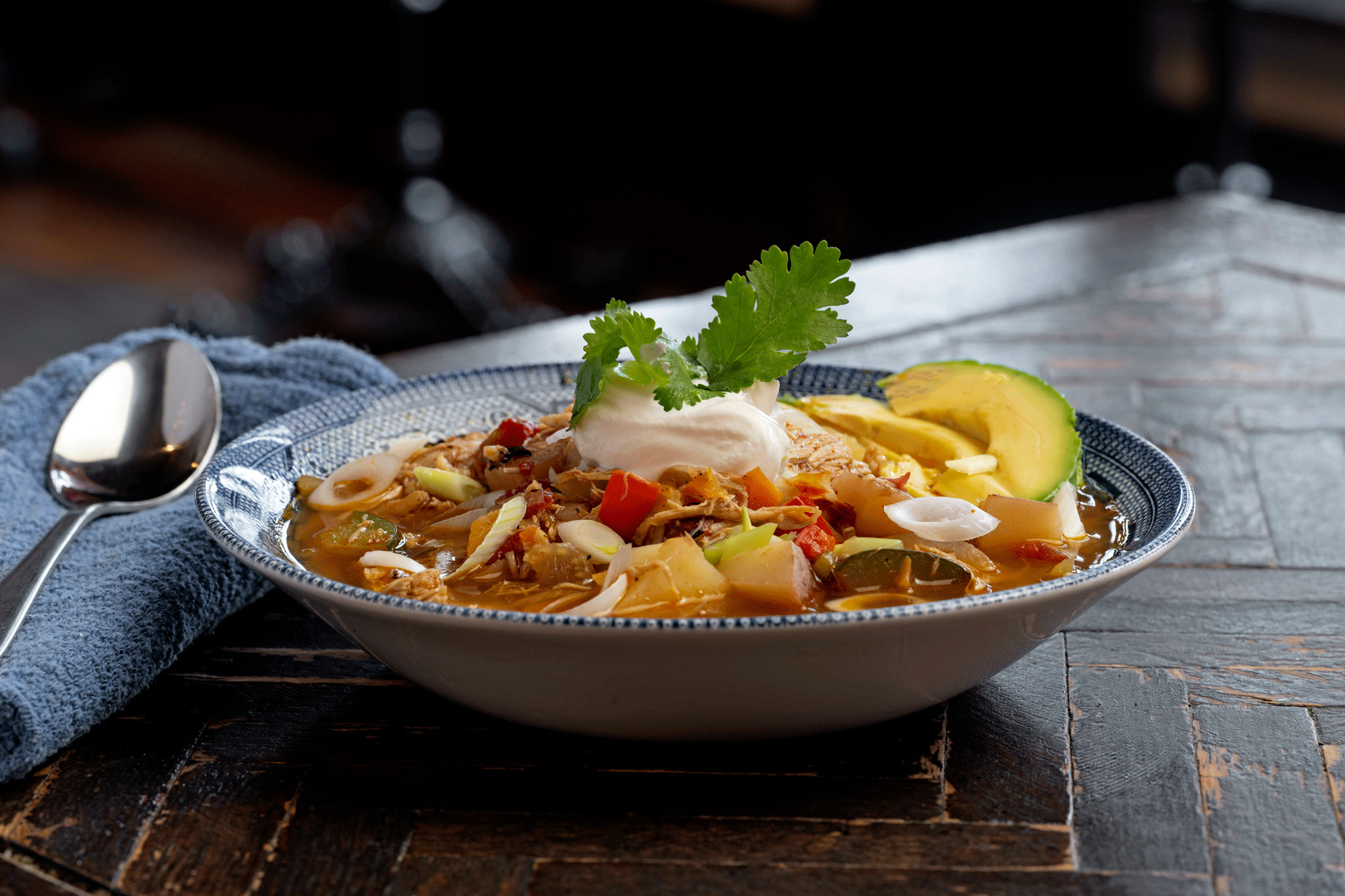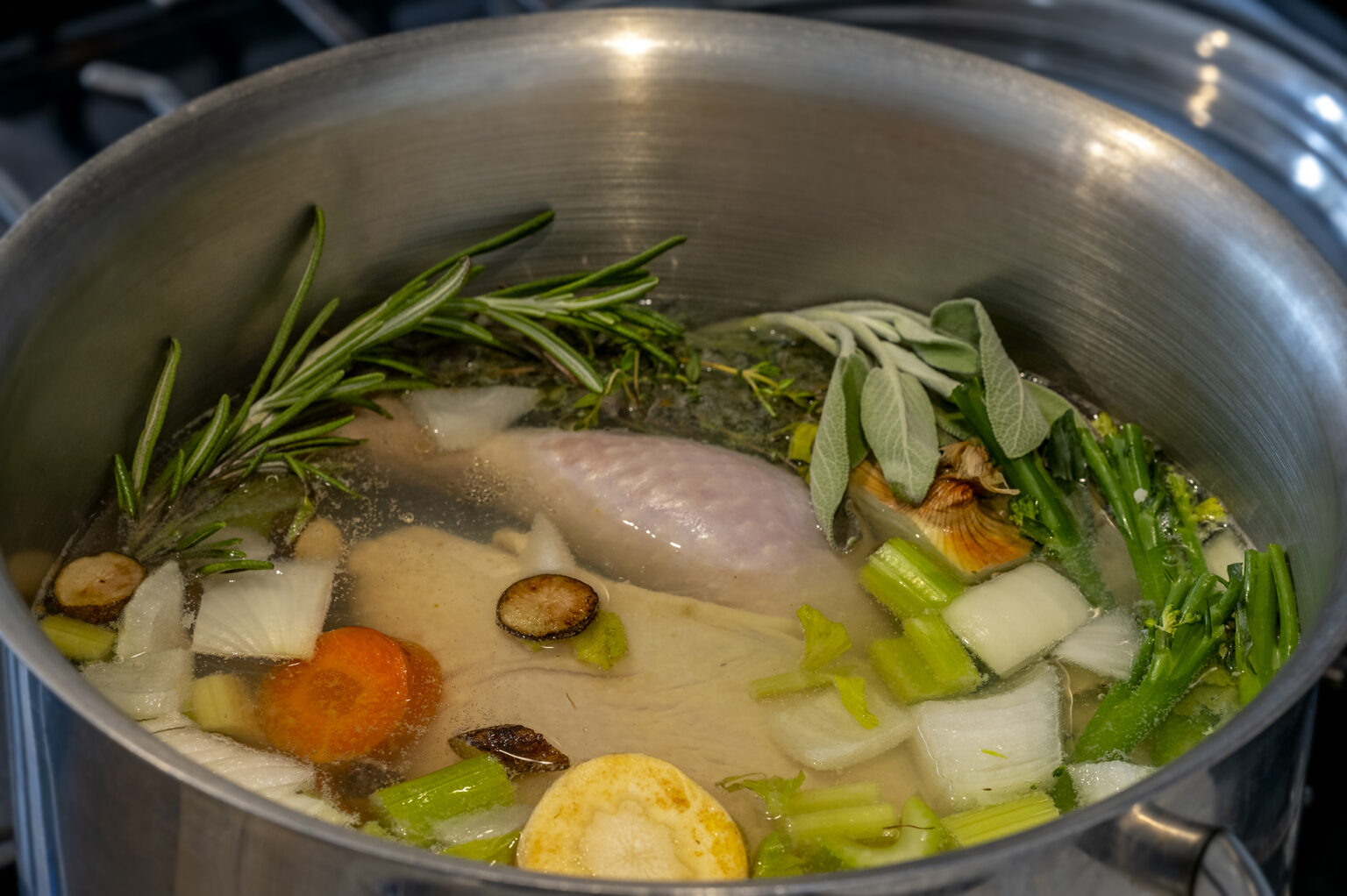Even though I grew up in the sweltering humidity of southern and central Texas, soups, stews and broths were a menu staple in our house. When each of us daughters got our wisdom teeth out, my mom made a steaming bowl of beef broth bolstered with peas and carrots. The flavors were simple, the warmth comforting and the texture easy on the mouth and digestive system.
While some people use the terms “stock” and “broth” interchangeably, traditionally, stock is a combination of ingredients cooked in water to extract their flavors. Broth, especially bone broth, is considered a slow-boil process of extracting more than flavor from the ingredients and choosing the best, most traditional ingredients, such as grass-fed beef bones, filtered water and organic vegetables, for optimal nutritional benefit.
From soothing, slow cooked Korean beef broth to classic Norwegian fish stock, from the perpetual “golden liquid” stocks of French households to the Greek medicinal cleansing soups praised by Hippocrates, this versatile brew has been described as “Jewish Penicillin” (Maimondes), a liquid that “can resurrect the dead” (South American proverb), and “everything in cooking. Without it, nothing can be done.” (Escoffier)
Today, cultures that don’t use milk in their cuisines rely on broth as a source of absorbable calcium and other nutrients. In many world diets, broth is a staple ingredient for a wide variety of dishes beyond soups and stews, including stir-fries, snacks, pasta, sauces, marinades, casseroles, veggies and much more.
Here in the U.S., we defer to the convenience of boxed broths and bouillon cubes, which often contain preservatives and MSG. But, traditional bone broth rose to dietary prominence in the early 2000s when the Paleo diet came on the scene. Broth cafes, broths on restaurant menus, and home-broth brewing are now more common, and we have only just begun to explore the benefits of this beautiful liquid. Here is the basic method of making a rich bone broth.

1. Begin with marrow bones, some pieces of tough meat, some fat, clean cold water, carrots, onions, celery and garlic. Include the carrot tops and bottoms, the onion skins, the celery leaves and the garlic skins. Brown beef or lamb for a Maillard reaction.
2. Include vegetable scraps, such as bell pepper stems, sheared corn cobs, pea shells and broccoli stems – and culinary or medicinal roots and herbs.
3. Bring the broth to a boil slowly and reduce heat just as it starts to boil. Keep at a low simmer.
4. Remove the initial scum that contains impurities and alkaloids.
5. Simmer low and slow for a minimum of two hours.
6. Strain the broth. Use the “leavings” for casseroles, terrines, pulled meat tacos, soups and more.
7. Refrigerate for 3-4 days or freeze in ice cube trays and then in freezer bags for easy use in cooking.
>> Vegetable Stock & Broth
While broths are traditionally made with meat, poultry or fish and their bones, vegetable stock and broth are important in American and Western culinary culture today. The base of a solid veggie stock is: celery, carrots, onions, and garlic, with fresh herbs for complexity and mushrooms for depth. Make it heartier with tomato paste, nutritional yeast, agar agar or miso paste. You can turn your veggie stock into a broth using a variety of ingredients that are nutrient dense in vitamins, minerals and proteins commonly found in meat and bones. Here are just a few suggested additions.
• Nettles (calcium, silica, sulfur)
• Calendula (skin and wound healing, boosts collagen receptors)
• Turmeric root (anti-inflammatory antioxidant)
• Ginger (anti-inflammatory antioxidant – be aware of heat and flavor)
• Ashwagandha (calming adaptogen)
• Ginseng (stimulating adaptogen)
• Dandelion root (digestive, cleansing) N
Story by S Michal Bennett
Photography by Joel Riner


